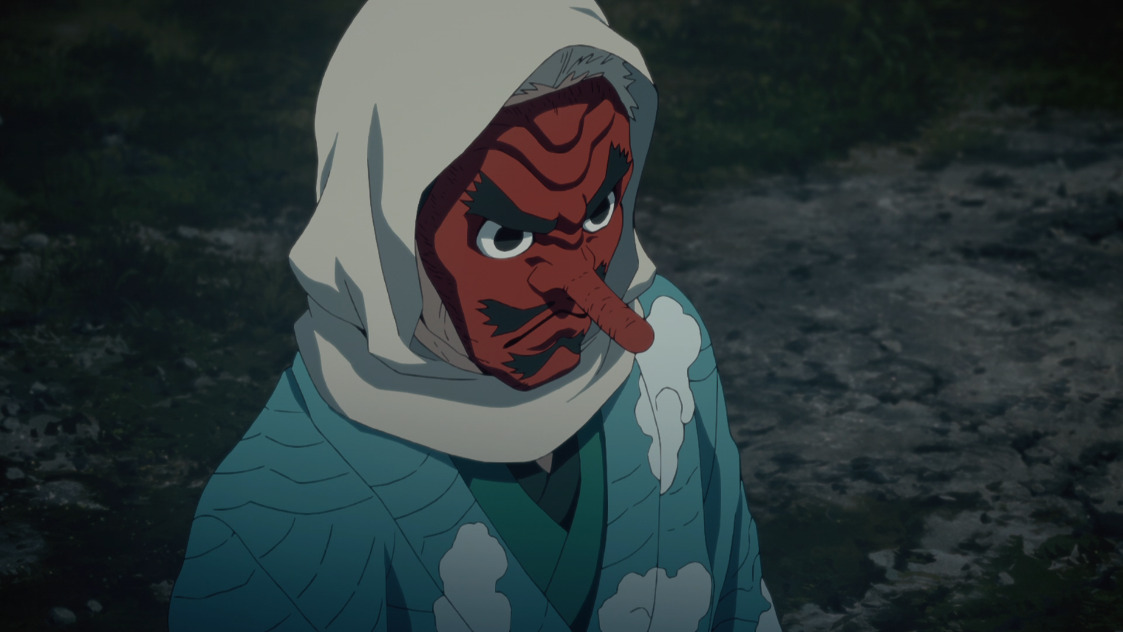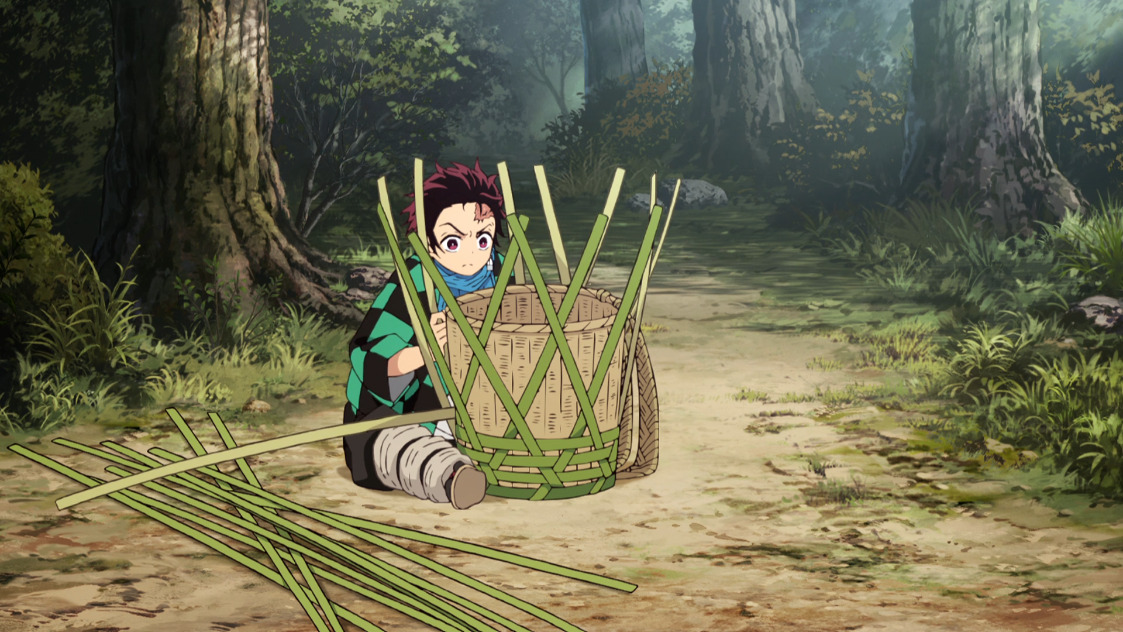NOTE: This article contains mention of potentially disturbing content due to the nature of the series in question. Reader discretion is advised.
It’s hard to think of a title more straightforward than Demon Slayer. You learn, instantly, two things about the series. There are demons. There are also demon hunters, presumably because the demons are evil. “Person slays monsters” is one of the oldest stories in fiction. Seeing it represented in anime so often is, then, not a huge surprise. Still, between this show, the still-airing Dororo, and FromSoft video game Sekiro, it’s a great time to be a fan of the “fighting demons in Japanese historical periods” genre.
Episode 1
A few things separate Demon Slayer from the pack, in terms of the specific storytelling beats it goes for. Before we get to that though, it’s helpful to break down the story so far. Demon Slayer is the story of Tenjiro, a Taisho-era boy who lives in the mountains and sells charcoal to raise money for his family. The family consists of his mother and his many, many siblings. His peaceful life is disrupted when demons attack his family in the middle of the night while he’s on a selling run in the town at the foot of the mountain.
When he returns, only his sister–Nezuko–is still alive. Even she has not gotten away unscathed, as surviving a demon attack evidently turns you into one. A mysterious swordsman named Giyu then shows up and tries to put Nezuko down.

It’s important to label your tools.
Tenjiro defends her, and the swordsman, impressed by the boy’s gumption, lets both Tenjiro and Nezuko go. Nezuko can’t be exposed to sunlight (which kills demons near-instantly), so they have to travel under the cover of darkness. That’s the first episode in a nutshell.
Characters
Demon Slayer is, indeed, so shonen it hurts. That’s not a bad thing on its own, though. I’ve said before that there’s a lot to be said for a series knowing what it wants to do. Demon Slayer starts separating from the pack a little bit in a couple of (at this early juncture, fairly small) ways.
For one, Tenjiro’s goal is refreshingly small. Less the “I want to save everyone” omniheroics of say, fellow ufotable anime adaptation protagonist Shiro (Fate/stay Night: Unlimited Blade Works) and more a modest, understandable desire to save his last remaining family member. Now of course, this is still a shonen series, so it’s reasonable to expect it to blossom into that at some point. But having a character start small, so to speak, provides more room for later character growth.
Next there’s Nezuko. Nezuko is an interesting character. Her “condition” is kept under control by literally sealing her mouth shut. She has what appears to be a scroll holder in her mouth for the vast majority of her screentime, making her mute. This would be disastrous in lesser hands. It’s not hard to imagine a mangaka simply not knowing how to write a girl, and thus choosing to literally shut her up to avoid dealing with that. Here though it’s important to keep in mind two things. One is that the original Demon Slayer manga is written by a woman (Koyoharu Gotōge). The other is that there is quite a lot of character-building that can be done non-verbally.
Episode 2
Let’s take the first third of the second episode as an example here. Tenjiro tries to figure out a way to continue travelling with his sister during the day, without exposing her to sunlight. His solution is to build a large lidded basket. What this means is that a good chunk of this part of the episode is devoted to fitting-sister-in-basket logistics.

Even before that, he notes that Nezuko has burrowed a hole in the cave they’d spent the previous night in.

These moments are genuinely hilarious. Given how spotty intentional comedy tends to be in shonen work, that’s actually really worth something.
The two later encounter another demon. One that’s clearly quite dangerous, as he’s introduced to us like this.

Tenjiro tries to fight the demon himself. Perhaps predictably though, he can’t really hack it with his small hatchet and lack of fighting experience. So what happens to our protagonist, is he saved by the arrival of a mysterious new character? Does dumb luck kick in? No. Nezuko runs over, and with her newfound demon strength, kicks the assailant’s head clean off his shoulders.

RELATED: Anime Impressions – DORORO
It’s a lovely little inversion of the damsel in distress trope. Honestly, at this early stage, it sometimes seems more like Nezuko is the protagonist than Tenjiro. The fight sequence continues for some time after that (being beheaded hardly stops demons, who it’s established early on, have incredible regenerative abilities), and it’s a serious highlight of the show so far. ufotable are a studio well-known for impressive fight choreography, and while their increased use of CGI blending might draw some detractors. I’m of the opinion that while this series has yet to match Unlimited Blade Works‘ sheer spectacle, it certainly has the potential to get there.
Conclusion
Style, really, is Demon Slayer‘s big asset right now. The character designs pop. Tenjiro is anything but a generic everyboy protagonist. Nezuko’s looks–particularly her multicolored dreadlocked hair–stand out too. Later in the episode we’re introduced to Sakonji, the obligate mentor character, who spends his time walking around with a tengu mask on.

RELATED: The End of Noise in BOOGIEPOP & OTHERS
The show is of course well-animated, and the soundtrack is lovely too.
What remains up in the air is whether it can weave a truly compelling story out of these elements. Right now, the storytelling has been a bit rote, moments of real humor and light subversion aside. Episode 2’s second half is largely taken up with a training sequence. Something that anyone who is even somewhat familiar with this genre could probably have seen coming the moment Sakonji walked onscreen.
So it has its problems. However, it’s worth keeping in mind that in a season that is as diverse as this one is shaping up to be, managing to bring such a straightforward story to the table and stand out even a little bit is extremely impressive. Demon Slayer right now is riding on goodwill generated from its sense of style and from the backing one of the most well-regarded anime studios. Time will tell if that translates into a strong narrative further down the road, but I, for one, certainly hope it does.
Catch up on my weekly anime columns for GGA here!
- MAGIA RECORD Season Finale Recap: (S02E08) You’re Not Strong - September 25, 2021
- MAGIA RECORD Recap: (S02E07) You Don’t Know Anything - September 11, 2021
- MAGIA RECORD Recap: (S02E06) This Is Something Only I Can Do - September 4, 2021

